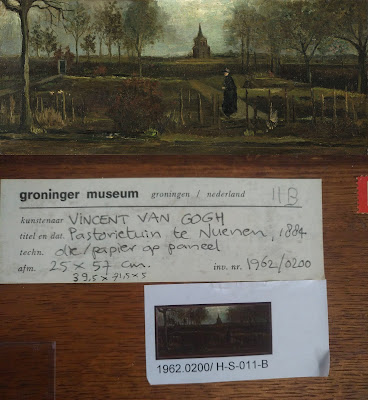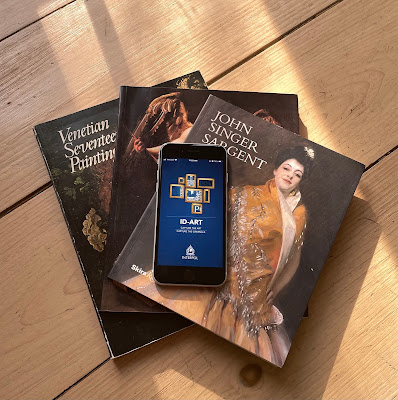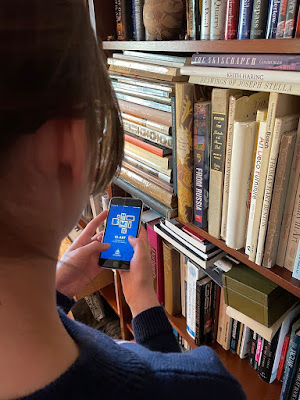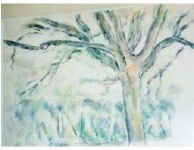Today is Van Gogh’s 166th birthday.
To celebrate his importance, we highlight his works of art which have been stolen over the years. Some of these remain missing.
When opportunity has knocked, art thieves have often had a preference for works of art attributed to Vincent Van Gogh. But just how many artworks by Vincent van Gogh have been stolen?
In Van Gogh's lifetime, he only sold one painting, The Red Vineyard, despite the fact that his works have long commanded substantial figures in the contemporary art world. Nine of his masterpieces are ranked among the world's 50 most expensive works of art ever sold.
Echoing that, the wave pattern of art theft often mirrors the whimsy of the art market. And when that happens, thieves often follow the path of least protection or resistance and strike at objects the know to be of value taking into consideration the places that allow for the opportunity.
Taking a look inside ARCA's list of art crimes involving the artist Vincent Van Gogh and by our count, 36 Van Gogh works of art have been stolen, 3 of them two times each, over the course of 14 separate art thefts.
-----------
Stolen in 1937 -
The Lovers: The Poet's Garden IV, 1888 1888 is only known to the art world through an 1888 letter from Vincent Van Gogh to his brother, Theo and a single black and white photograph.
This painting was seized by Reichsfeldmarschall Hermann Göring along with three other Van Gogh paintings from Berlin and Frankfurt between 1937 and 1938 from the National Galerie in Berlin - most probably because he wanted to monetize it, along with others.
This artwork, likely an oil on canvas was completed the same year the letter to Theo was sent and is all the more touching for the small sketch the artist sent to his brother along with his letter. This work has been been missing since 1937/38 and has never been recovered.
-----------
June 4, 1977 - Poppy Flowers (also known as Vase And Flowers and Vase with Viscaria) 1887 was stolen from Cairo's Mohamed Mahmoud Khalil Museum and later recovered only to then be stolen again in 2010.
-----------
February 17, 1975 – Van Gogh watercolour
Breton Women (after Emile Bernard) also known as Les bretonnes et le pardon de pont Aven was one of 28 works of art stolen from the Galleria d'Arte Moderna in Milan, Italy. The painting was recovered in an apartment registered to an alias in Milan on April 6, 1975. It too was stolen a second time, just one month later.
See the individual theft post here.
-----------
May 15, 1975 - Van Gogh watercolour
Breton Women (after Emile Bernard) also known as Les bretonnes et le pardon de pont Aven was stolen for a second time along with 37 other Impressionist and Post Impressionist works of art from the Galleria d'Arte Moderna in Milan, Italy. This follow-up theft included many of same artworks previously taken during the February 17, 1975 theft. The Van Gogh was recovered on November 2, 1975 in what was then West Germany along with ten other stolen artworks taken during the second the Galleria d'Arte Moderna theft.
See the individual theft post here.
-----------
May 20, 1988 - Three paintings Vase with Carnations (1886) by Vincent Van Gogh, La maison du maître Adam Billaud à Nevers (The House of Master Adam Billaud at Nevers) painted in 1874 by Johan Barthold Jongkind and Bouteilles et pêches (Bottles and peaches) painted in 1890 by Paul Cézanne were stolen from the Stedelijk Museum, next door to the Van Gogh Museum on the Museumplein in Amsterdam. All three works of art were recovered undamaged. See the individual theft post here.
-----------
December 12, 1988 - Three Van Goghs worth an estimated €113 million euros were stolen from the The Kröller-Müller Museum in Otterlo about 60 miles east of Amsterdam. The stolen works of art included the second of three painted sketches titled
De aardappeleters, (the potato eaters) completed in 1885, as well as two other works
Four Cut Sunflowers, (also known as Overblown Sunflowers from August-September), 1887 and
Loom with Weaver,1884. All three paintings were recovered but had sustained damages.
See the individual theft post here.
-----------
June 28, 1990 - Three early Van Gogh paintings,
Digging farmer, 1885-87,
Brabant Peasant, seated, 1884-1885, and
Wheels of the Water Mill in Gennep were stolen from the Het Noordbrabants Museum in Den Bosch, Netherlands. The Digging Farmer was found in 1991 in a bank safe in Belgium. The other two paintings were returned in 1994 via negotiations with a tertiary party.
See the individual theft post here.
-----------
April 14, 1991 - 20 paintings by Vincent van Gogh were stolen from the Vincent Van Gogh Museum in Amsterdam. All 20 paintings were recovered within 24 hours. Three of the 20 paintings were severely damaged. Four perpetrators, including one museum guard and a former employee of the museum's security firm were arrested in July 1991.
See the entire list of artworks and the individual theft post here.
-----------
May 19, 1998 - The prestigious Galleria Nazionale d'Arte Moderna in Rome was robbed by three armed with guns shortly before closing time. The criminals stole two paintings by Vincent Van Gogh's
L'Arlésienne, 1889 and
Le Jardinier, October 1889 and Paul Cézanne's
Cabanon de Jourdan, 1906. On July 5, 1998 eight suspects were arrested and all three paintings were recovered.
See the individual theft post here.
-----------
May 13-15, 1999 - The Vincent van Gogh painting,
The Willow, was stolen from the headquarters of F. van Lanschot Bankiers NV in Den Bosch. The painting was recovered in 2006 following an undercover sting operation where two suspects were arrested.
See the individual theft post here.
-----------
December 7, 2002 - Two thieves using a ladder break in to the Van Gogh Museum making off with two paintings,
View of the Sea at Scheveningen (1882) and
Congregation Leaving the Reformed Church in Nuenen (1884). Following an intensive international investigation, two Dutchmen, Octave Durham, A.K.A. "The Monkey" and Henk Bieslijn were arrested in 2004 for their respective roles in the burglary. Durham received a prison sentence of 4.5 years. Henk Bieslijn was sentenced to 4 years incarceration. Each of the culprits were ordered to pay the Van Gogh Museum €350,000 in damages and both denied responsibility. The paintings remained lost for 14 years only to resurface in late September 2016 in the Castellammare di Stabia area in the Bay of Naples. During a blitz by Italian law enforcement on members of an illicit cocaine trafficking ring operated by a splinter group of the Naples Camorra, the paintings were recovered and are now safely back at the artist's museum in Amsterdam.
See individual theft post here.
April 26, 2003 - Three paintings including Van Gogh's
The Fortification of Paris with Houses, Picasso's
Poverty and Gauguin's
Tahitian Landscape were taken from The Whitworth Art Gallery at The University of Manchester. The works of art were found the next day crammed into a tube behind a public toilet in Manchester's Whitworth Park.
See the individual theft post here.
-----------
February 10, 2008 - Four paintings were stolen at gunpoint from a private Zürich gallery run by the Foundation E.G. Bührle in Switzerland. The paintings were
Blossoming Chestnut Branches by Vincent Van Gogh, Paul Cezanne's
Boy in the Red Waistcoat, Claude Monet's
Poppies near Vétheuil and Edgar Degas'
Count Lepic and His Daughters. The Van Gogh and Monet were recovered on February 18, 2008. The Degas was recovered in April 2012 and Cezanne's Boy in the Red Waistcoat was recovered April 12, 2012.
See the individual theft post here.
-----------
August 21, 2010 - Poppy Flowers (also known as Vase And Flowers and Vase with Viscaria) 1887 was stolen for the second time from the Mohamed Mahmoud Khalil Museum in Cairo. Its current whereabouts are still unknown.
 art theft,Groninger Museum,museum theft,Singer Laren Museum,stolen art database,The Netherlands,Vincent van Gogh
art theft,Groninger Museum,museum theft,Singer Laren Museum,stolen art database,The Netherlands,Vincent van Gogh
 No comments
No comments





























